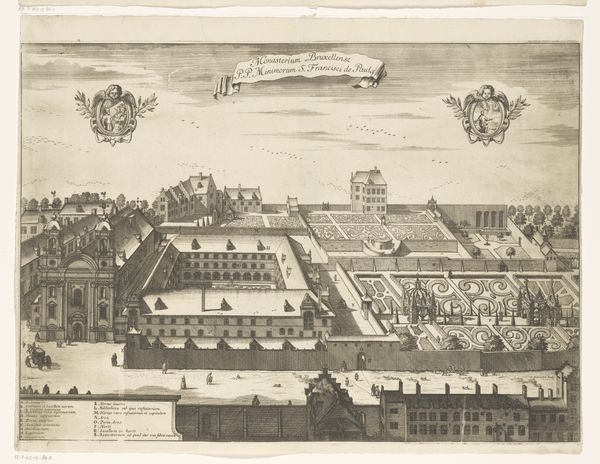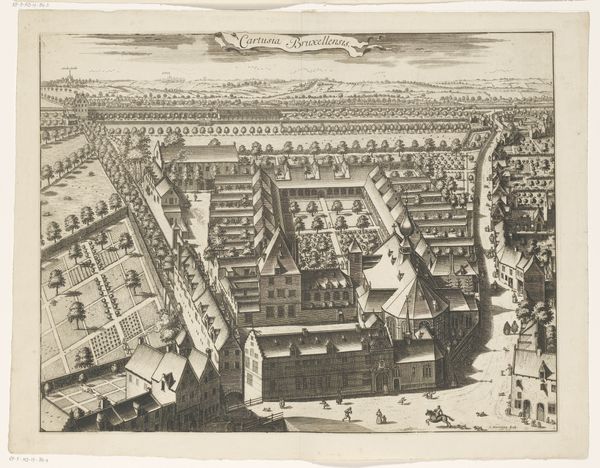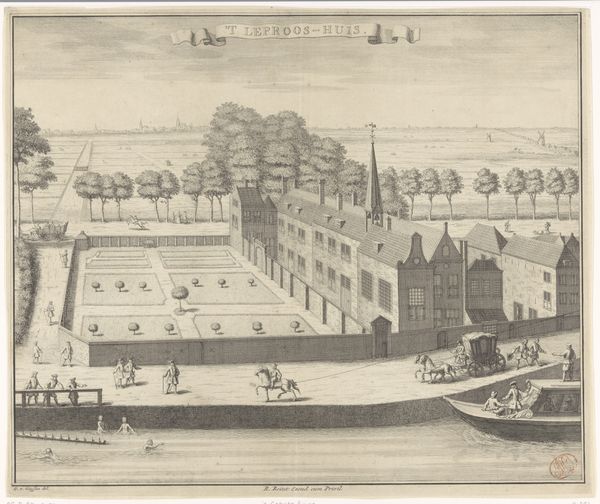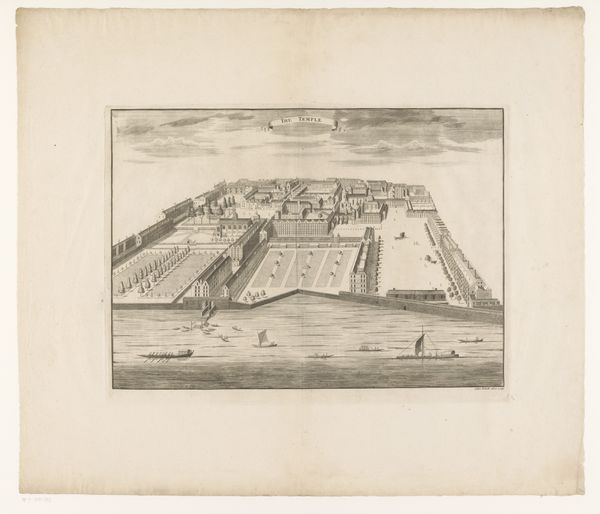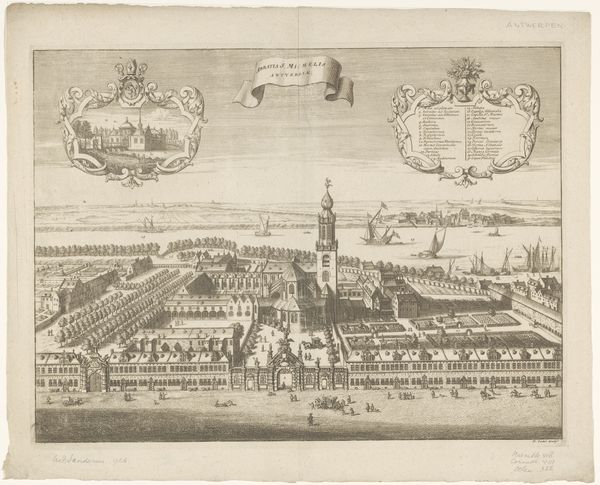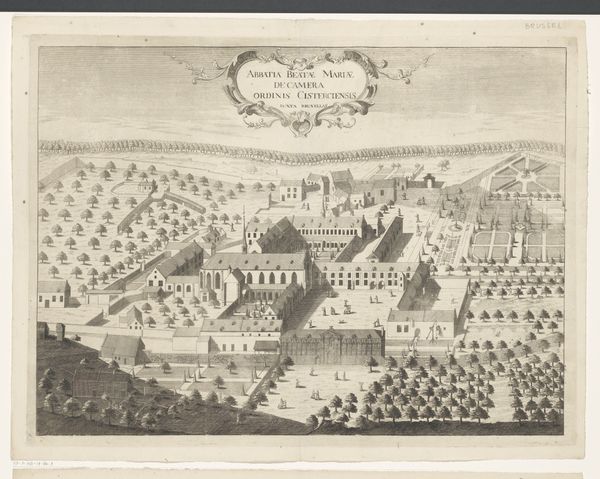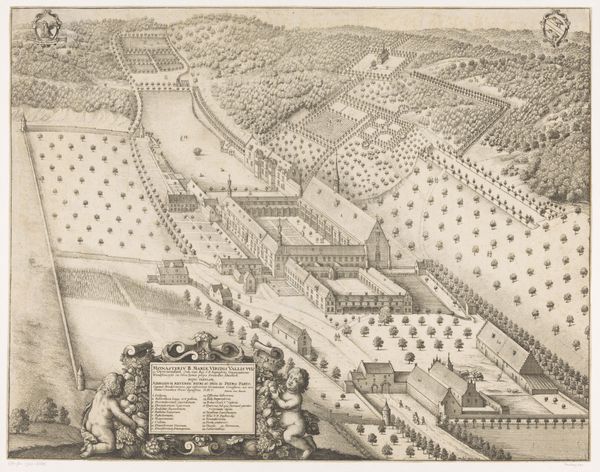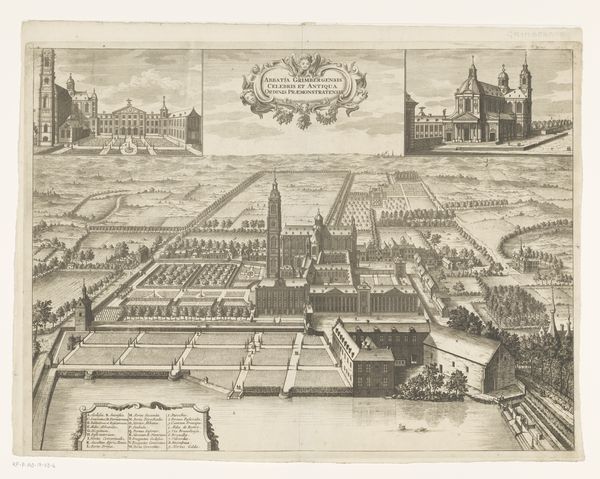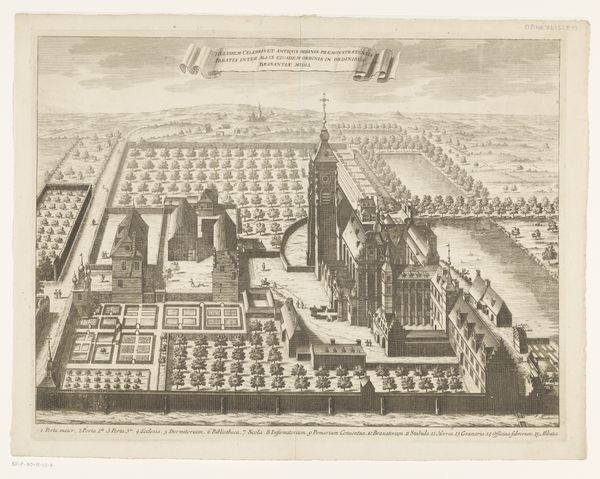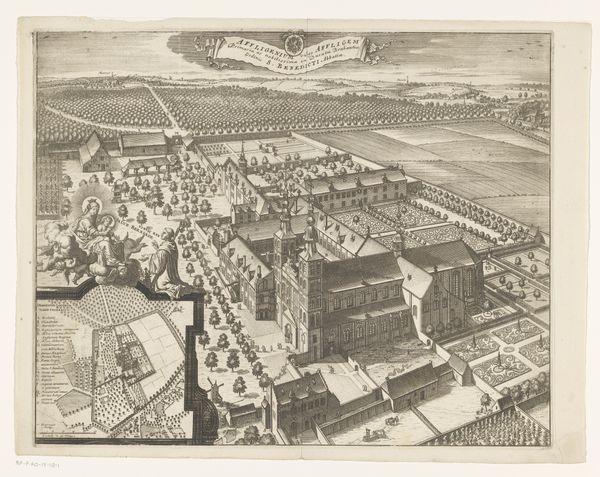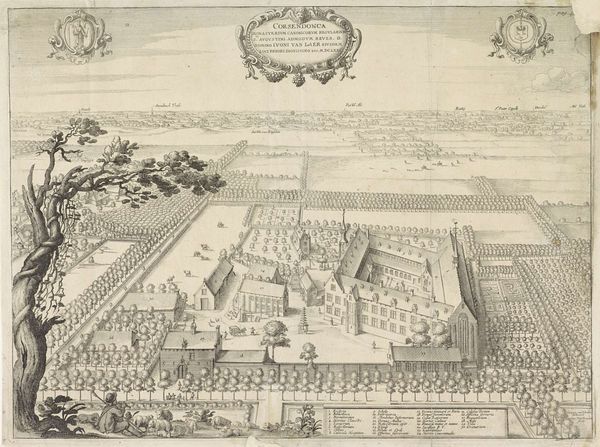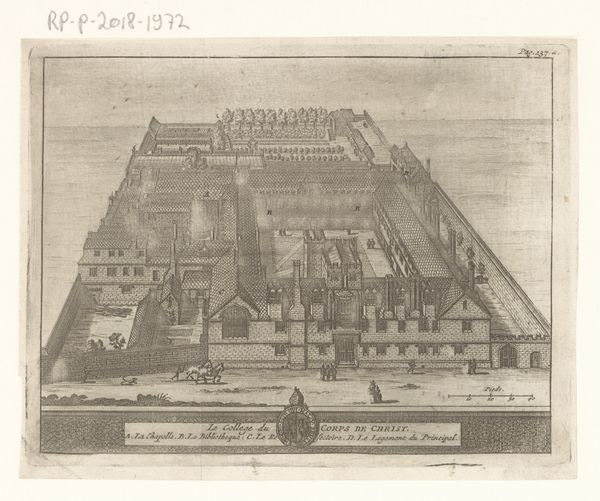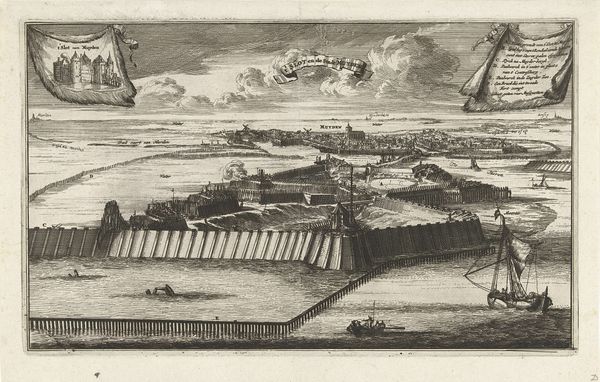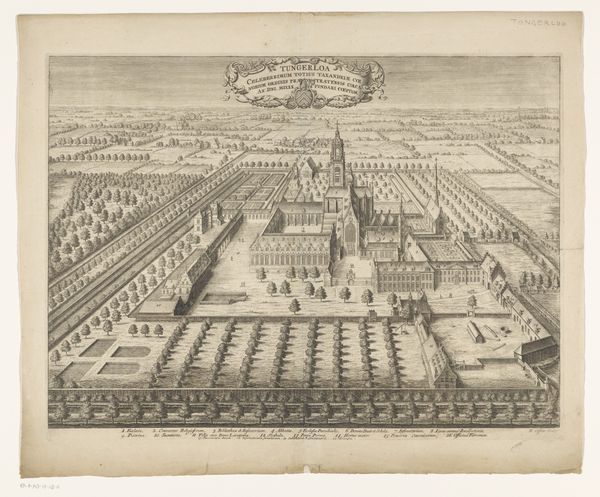
print, engraving, architecture
#
baroque
# print
#
landscape
#
cityscape
#
engraving
#
architecture
Dimensions: height 354 mm, width 465 mm
Copyright: Rijks Museum: Open Domain
Curator: Before us is an engraving, dating from 1726-1734, entitled "Gezicht op de Sint-Bernardusabdij, te Hemiksem," which translates to "View of the St. Bernard Abbey in Hemiksem." It’s a rather detailed cityscape, wouldn't you agree? Editor: My initial impression is one of containment. Everything seems so ordered, regimented—the buildings, the landscape, even the river traffic feels somewhat posed. There's a certain visual austerity, despite the ornamentation. Curator: Indeed. The artist, David Coster, meticulously delineates the architectural forms. The organization and clean, distinct lines of the various elements create a harmonic overall composition. Notice how Coster uses the precise hatching and cross-hatching typical of engraving. Editor: But who inhabited this carefully mapped space? I'm thinking about the power dynamics implicit in the construction of such a visually controlled environment. What was the role of the abbey within the socio-political structure of the time, and who benefited from that organization of space and resources? Curator: A fair point. While the piece is clearly baroque, the engraving technique itself lends a level of precision that seems to distance it from the baroque’s inherent drama. Still, I am interested in how he uses subtle gradations of tone. Editor: And what narrative do those gradations support? Beyond an exercise in perspective and skill, what’s the political message here? How might the lived experiences of people within the Abbey and Hemiksem deviate from this depiction? I wonder, what was deliberately omitted, and whose perspectives remain invisible within the frame? Curator: It is quite intricate. Thinking about the skill involved in the creation and reproduction of prints from that era allows me a sense of historical appreciation, whereas perhaps my initial aesthetic expectations lead me toward a different approach of viewing artworks. Editor: True, focusing on artistic intention can illuminate our viewing experience, but it might also benefit our perspective to question the systems of belief such works may be promoting. By recognizing the social function, can reveal the many ways such depictions of space helped produce very real cultural outcomes.
Comments
No comments
Be the first to comment and join the conversation on the ultimate creative platform.
